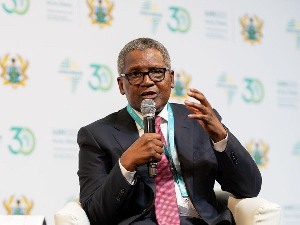By Paul Achonga Kwode
The good book (the bible) says Jesus died and resurrected on the third day,
thus good to hear but I bet you I beat Jesus’ records by dieing and resurrecting on
the same day, believe me or not brother, I did and please do not think I am
blaspheming. It was a great opportunity to be offered a job especially these days
when the white collar jobs are simply non-existent. But my search for a job rather
led me to my first death when I was asked to go for medical examination as part of
the requirements to be deemed medically fit for employment. Among some of the
diseases to be tested were HIV and AIDS.
I was ushered to the HIV and AIDS counseling unit in one of the government’s
hospitals in the country and the matron in-charge welcome me with a warm and
cheerful smiles but what follows sent shivers deep down my spine.
I was asked if I have been falling sick of late and I thought that was
unprofessional on the part of the senior nurse because I don’t have to be sick
before knowing my HIV status, do I?
Then she proceeded, “how many girl friends do you have and do you always protect
yourself before sexual intercourse? Folks, except you have had the experience of
checking your status, you will not know what I was going through at that moment. I
instantly wet the seat with urine as I ponder to get answers.
It was then that I started reflecting deeply in my mine about all the sexual
escapees particularly those I did “skin to skin”, (condom or no condom). I also
thought of those of my girl friends who were faithful to me and those who were not.
All these did not send my soul to the graves till a sample of blood was taken
from me for study and testing of which it would take about ten minutes. While I was
waiting for the ten minutes which was not forth coming, the question that kept
running through my brains electronically was “do I have HIV and AIDS or not”. My
heart also started jumping and breathing faster and faster till I lost my final
breath-thus dead.
It is quite surprising that upon the major campaigns against stigmatizations
against people living with HIV and AIDS, even a senior nurse working for several
years and even serving as a counselor acted beyond professional competence in my
opinion. The educational campaigns advocate that the disease is now like any other
ailments that by proper nutrition and medication, one could still survive for long.
UNAIDS and WHO 2008 reported on the global AIDS epidemic estimate that 22 million
adults and children were living with HIV in sub-Saharan Africa at the end of
2007.During that year, an estimated 1.5 million Africans died from AIDS. The
epidemic has left behind some 11.6 million orphaned African children. The estimated
number of adults and children living with HIV and AIDS, the number of deaths from
AIDS, and the number of living orphans in Ghana at the period are equally
unacceptable.
The report indicated that 260,000 people were living with HIV and AIDS in Ghana
of which 150,000 were women, 17,000 as children and 21,000 deaths recorded as a
result of the disease. Also 160,000 children became orphans due to AIDS. A high
percentage of 1.9 of adults between the ages of 15-49 was used as target groups for
these findings.
The country’s HIV prevalence rate has been declining in recent years giving much
hope for the human resources of the nation.
A recent report on the national HIV prevalence rate has declined from 1.9 per
cent in 2007 to 1.7 in 2008, indicating a stabilizing condition, Dr Nii Akwei Addo
Programme Manager of the National AIDS Control Programme (NACP) has said this in a
recent media report adding that the highest prevalence level was recorded among the
25 to 29 year group while the least span age group is 15-19.
HIV prevalence at the regional level ranged from 1.1 per cent in the Northern
Region to 4.2 per cent in the Eastern Region. All regions with the exception of
Eastern recorded a decrease in prevalence from 2007 with Greater Accra, Ashanti and
Eastern regions recording prevalence of three per cent and above. Upper West Region
recorded the highest decline from 3.3 per cent to 1.6 per cent with Volta, Western
and Upper East, witnessing a consistent decline in prevalence since 2006.
Presenting the findings of the HIV Sentinel Survey, conducted in 40 sentinel sites
strategically located in 17 rural sites and 23 urban sites, Dr Addo said nearly 95
per cent of HIV positive samples were HIV type I with HIV type II recording 3.8 per
cent and dual infection of types I and II was 1.7 per cent of the total positive
samples. HIV site prevalence for 2008 had North Tongu (rural) again recording 0.0
per cent with Agomenya (urban) recording 8.0 per cent. The HIV Sentinel Survey is a
cross sectional survey targeting pregnant women attending ante natal clinics in
selected sites in Ghana. The annual HIV sentinel surveillance system was initiated
based on the premise that prevalence of HIV among pregnant women is a good proxy
indicator of the spread of infection among the populace. Agomanya in the Eastern
Region again recorded the highest with 8.9 per cent from 8.4 per cent in 2006 whilst
Krachi rural in the Northern Volta, recording the lowest
of 0.3 per cent.
Eastern Region recorded the highest of 4.5 percent, Ashanti 3.0, Greater Accra 3.0
per cent, Brong Ahafo 2.6 per cent, Upper West 1.6 per cent, Western, 2.9 per cent,
Central 2.0 per cent, Upper East 2.5.per cent Volta 1.7 per cent and Northern Region
1.1 per cent. According to the report, there were an estimated number of 236,151
persons living with HIV and AIDS with 98,306 males and 137,845 females. In all
22,541 new infections and 18, 082 deaths were recorded with 2, 2241 being children.
Dr Addo noted that HIV prevalence among Sexually Transmitted Infections (STI)
clients almost doubled from 5.7 per cent to 10.5 per cent in 2008 due to increases
at both the Adabraka and Kumasi sites with the Adabraka STI site recording a
prevalence of 15 per cent. The Kumasi site recorded 6.5 per cent. The highest is in
the 35-39 age groups.
Projecting from 2008 to 2012, Dr Akwei said the number of Persons living with HIV
and AIDS would increase from 1.75 per cent in 2012 to 1.8 in 2015, isn’t it
worrisome?. The number of persons living with HIV and AIDS would however continue to
increase due to the combined effects of population growth and an increasing number
of HIV infected persons that were living on Anti Retroviral Therapy (ART).Total
adults need for ART was expected to increase beyond the 2008 estimate of 63,137. A
decline in trend was anticipated in children from 2008 estimates of 5,449.With
annual positive birth reducing due to improved Prevention to Mother to Child
Transmission strategy. Dr Addo called for sustained prevention education targeted at
the youth and other special groups to ensure further decline in the overall
prevalence.
Dr George Sipa-Adjah Yankey, then Minister of Health noted at the forum that
prevention was the bedrock of the national response and called for behavioural
change, Voluntary Counseling and Testing and the expansion of services.
The Clinton Foundation, an International NGO spearheading the prevention of the
disease has enumerated that access Programmes work with generic pharmaceutical
companies and other suppliers are needed in developing countries such as ours to
reduce the cost of life saving antiretroviral medicines, testing and diagnostic
equipment, malaria treatment, and nutrition. It adds that major programmes
specialize in specific areas of need, including pediatric treatment, increasing
access to care and treatment in rural areas, strengthening countries' human resource
capacity for health, (my emphasis) and preventing the transmission of HIV and AIDS
from mother to child. I think majority of them needs some refresher courses
especially in psychology and health communication.
The Foundation advocated for governments to aggressively expand access to HIV and
AIDS care and treatment by assisting their ministries of health to develop sound
health care policies around HIV and AIDS, strengthen management capacity, and
implement cost-effective and comprehensive national responses to this epidemic.
Folks, I resurrected some few minutes after death beating the records of Jesus
who died and resurrected three days after and guest what, the results about my
status-positive or negative? I will suggest to the Ghana Health Service to adopt
different methodology of counseling and testing since the current system might put a
lot of people off from knowing their status. Some refresher courses for the health
personnel would do the best trick. Social psychological knowledge on the part of the
nurses and the counselors would also not be out of place. At the end of it all, is
mother Ghana we all aspire to cherish and keep going to have the best for.
The writer is a Journalist and a social critic (pkachonga@yahoo.com)
Opinions of Sunday, 12 September 2010
Columnist: Kwode, Paul Achonga
A Re-look at HIV and AIDS in Ghana
Opinions













